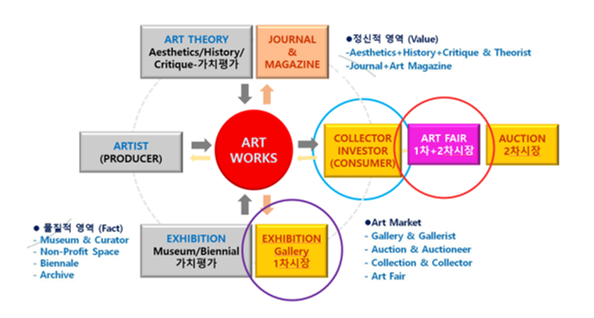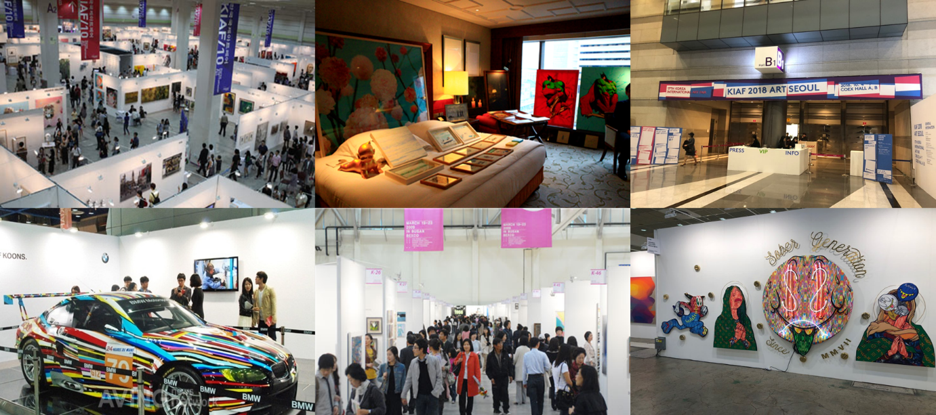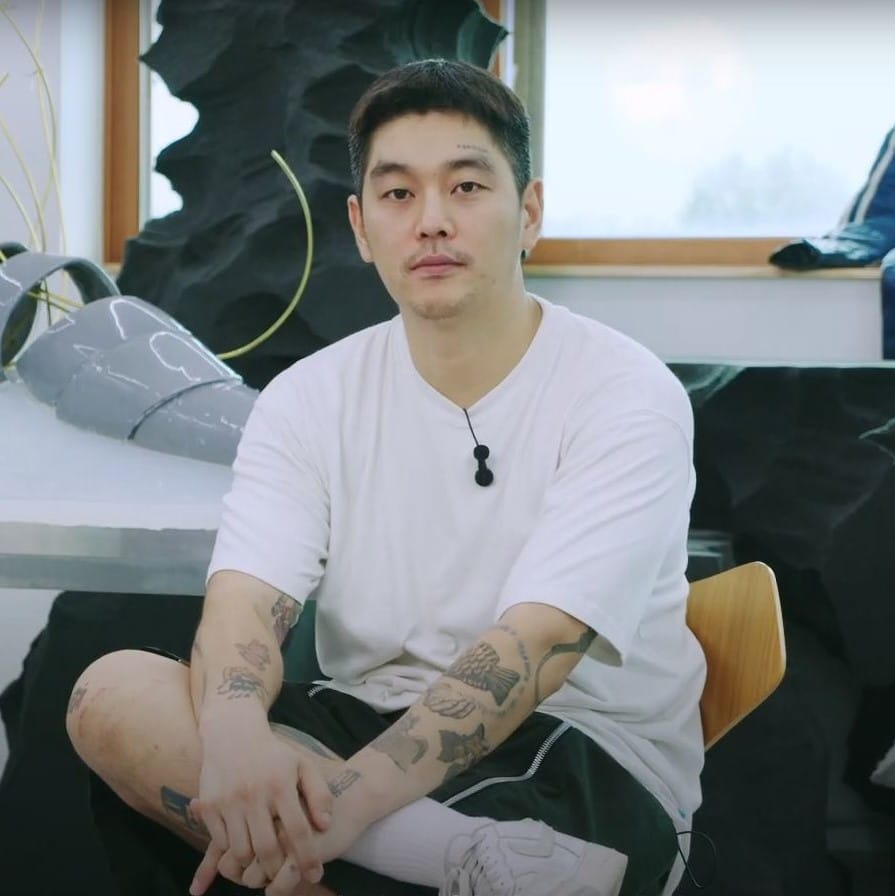+ Definition of the Art Market
The art market refers to the marketplace where
artworks are traded. Its key components include artists and their works as
producers, galleries, art fairs, and auctions as intermediaries, and collectors
as consumers.

The Operational Structure of Contemporary Art
+ The Operational Structure of Contemporary Art
Before the development of capitalism, artworks
were luxurious pastimes reserved for kings, popes, and the aristocracy.
However, from the 17th century onwards, as ordinary individuals began to
accumulate wealth, they commissioned portraits, and artists worked in more
liberated environments, leading to the activation of the art market.
Purchasing art can generally be divided into two
purposes: collection and investment. Collecting involves acquiring works to
preserve the spiritual values of the times for future generations, often by
museums or non-profit institutions. On the other hand, investment entails
purchasing works through individuals or art funds for resale and profit. In
general, the term "collection" in the art world refers to the former.
For the art market to function properly,
transactions between works and collectors must occur through intermediaries
such as dealers or galleries in a fair manner. Additionally, artwork prices
should be transparently determined based on the market principles of supply and
demand. While the unique characteristics of art may limit the application of
pure market principles, a market grounded in these principles is essential for
the establishment of an art market.
+ The Role of the Art Market
The primary market is where newly created
artworks are exhibited and sold, primarily through commercial galleries. The
secondary market involves the resale of artworks initially sold in the primary
market, with auctions playing a significant role. Art fairs bridge both
markets, providing a platform for diverse artworks to be showcased and sold,
often backed by large-scale capital.
Artwork prices fluctuate based on factors such
as authenticity, theme, medium, size, rarity, and the venue or circumstances of
the sale. Prices are also significantly influenced by national economic
strength, the importance of the market, and periods of economic boom or
recession. Thus, the expertise of galleries and auction houses is crucial for
determining prices and maintaining a well-functioning art market.
In recent years, the emergence of online art
markets, such as artsy.net and artnet.com, has been reshaping the industry.
These ambitious platforms aim to digitalize the global art market, with
investments reaching hundreds of millions of dollars. In Korea, various online
art markets have also emerged, though their development into fully-fledged
markets remains in its early stages. However, significant growth in this area
is anticipated in the near future.
+ Galleries
The term "gallery" originates from the
ornate salons of the early 16th century, where European royalty and aristocrats
displayed their treasures and art collections in corridors and small rooms,
called “Gallery” or “Cabinet.”
Today’s galleries go beyond merely selling art.
They serve as "spaces of cultural creativity" that foster the art
culture and as "spaces of arts management" that ensure sustainable
exhibition programs through capital generation.
For instance, Gagosian Gallery, often regarded
as one of the world’s top galleries, boasts an annual revenue exceeding 1
trillion won. With 14 locations worldwide, including five in New York (Chelsea
and Uptown Madison Avenue), Beverly Hills in Los Angeles, London, Paris, Rome,
Athens, Geneva, and Hong Kong, Gagosian exerts significant influence on the
global art scene.
 Roy Lichtenstein Exhibition Scene at Gagosian Gallery
Roy Lichtenstein Exhibition Scene at Gagosian GalleryDespite being a commercial gallery, Gagosian demonstrates curatorial capabilities and the ability to mobilize artworks on par with major museums, showcasing exhibitions of artists like Jeff Koons, Takashi Murakami, and Damien Hirst.
+ Art Fairs
Art fairs bring hundreds of galleries together
at specific locations to showcase and sell contemporary art, serving as a
barometer of current and future market trends.

Art Basel Unlimited Exhibition Scene
Major art fairs, such as Art Basel in Switzerland and Frieze Art Fair in the UK, feature prominent galleries worldwide. The artworks displayed range in price from tens of millions to billions of won, and the quality of exhibitions is exceptionally high. These fairs wield significant influence over the direction of contemporary art.
 2013 Frieze New York Exhibition Scene
2013 Frieze New York Exhibition SceneDuring art fairs, local museums and galleries often hold concurrent art events and exhibitions, attracting numerous tourists. Additionally, smaller satellite fairs, such as Scope and Pulse, occur alongside major fairs.
 2014 Scope Miami Art Fair Overview
and Exhibition Scenes
2014 Scope Miami Art Fair Overview
and Exhibition ScenesIn Asia, Art Basel Hong Kong has established
itself as a hub for contemporary art, with other fairs such as Art Beijing,
West Bund Art & Design in Shanghai, Art Fair Tokyo, and Art Stage Singapore
also gaining prominence.
In Korea, KIAF (Korea International Art Fair)
stands as the leading art fair, alongside others like the Galleries Art Fair,
Art Busan, Daegu Art Fair, and Gwangju Art Fair. These events, reflecting the
increasing scale and frequency of art fairs nationwide, garner significant
public interest and participation. Unique fairs like Union Art Fair, artist-led
and reflective of their perspectives, have also gained attention as a
distinctive response to the art market.

Various Art Fairs in Korea
The recent establishment of international fairs such as Frieze Seoul further enhances Korea’s reputation in the global art market, highlighting its dynamism and diversity.
+ Auctions
Art auctions are systems designed to encourage
competition and secure higher prices for artworks. Before auctions, artworks
are displayed for previews, typically for two weeks, followed by bidding
sessions at scheduled times.
Auction catalogs detail each artwork, including
information on the artist, title, year, medium, dimensions, exhibition history,
and provenance. Bidding begins at 80% of the estimated value, with unsold works
considered unsold if the minimum bid is not reached.
Globally, Christie’s and Sotheby’s dominate the
auction scene, influencing the art market with annual sales reaching trillions
of won. For instance, in 2019, Jeff Koons’ Rabbit sold for $91 million
at Christie’s, setting a record for the most expensive work by a living artist.
 Jeff Koons' stainless steel sculpture Rabbit
sold for $91 million at the 2019 Christie’s auction, surpassing the previous
record held by David Hockney to become the most expensive artwork by a living
artist.
Jeff Koons' stainless steel sculpture Rabbit
sold for $91 million at the 2019 Christie’s auction, surpassing the previous
record held by David Hockney to become the most expensive artwork by a living
artist.In the fall of 2019, Kim Whanki's Universe (05-IV-71 #200) was sold for 13.2 billion won at Christie's in Hong Kong. In the past few years, as the domestic art auction market has been revitalized and the international stage has become more active, the works of Park Sookeun and Kim Whanki have begun to exceed billions, and there were expectations and predictions that Korean artists would soon enter the 10 billion era, but they have finally surpassed that amount.

Kim Whanki (1913–1974), Universe (05-IV-71 #200), 1971, Oil on cotton (diptych). 254 x 254 cm / ⓒWhan-Ki Foundation
In Korea, auction houses like Seoul Auction and K-Auction have seen annual sales exceed hundreds of billions of won. While the art market constitutes only 0.02% of Korea’s GDP (compared to the OECD average of 0.1%), there is considerable potential for growth.
+ Collectors
Collecting involves consistently acquiring and
permanently holding artworks. While historically limited to a few wealthy
families in Korea, contemporary collectors include celebrities, entrepreneurs,
and professionals. Increasingly, young individuals purchase artworks,
reflecting a shift toward consuming art as a luxury or cultural commodity.
Globally, non-profit collections and museums
play vital roles in supporting emerging art trends and preserving cultural
heritage. Prominent collectors like François Pinault and Charles Saatchi
exemplify how collectors can influence artists’ careers and the art market.

Jeff Koons and François Pinault
Additionally, corporations such as Louis Vuitton and Mercedes-Benz operate non-profit foundations to collect and promote contemporary art, a trend mirrored by Korean companies.

Don and Mera Rubell & Family
The story of Don and Mera Rubell illustrates that one doesn’t need wealth to begin collecting art. Starting with a modest income, they consistently invested in art, eventually amassing an extensive collection now housed in the Rubell Museum.
 The Rubell Museum, which houses the 7,200-work
collection of Don and Mera Rubell.
The Rubell Museum, which houses the 7,200-work
collection of Don and Mera Rubell.With Korea achieving economic prosperity
comparable to advanced nations, it is time to embrace the cultural richness
offered by contemporary art. Greater understanding and engagement with the art
market will enrich lives and deepen appreciation for the arts, fostering a
thriving cultural landscape for future generations.























